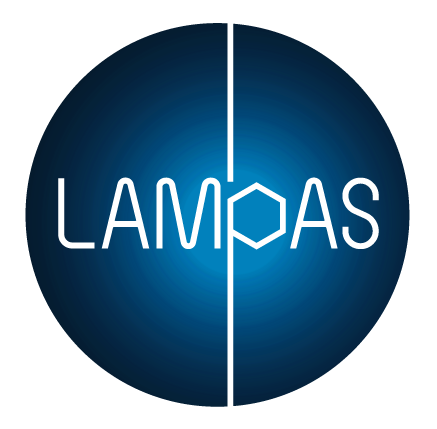
Technology
High-power ps-laser source: In LAMpAS project, a 1.5 kW laser system with 1-3 ps pulse duration and reduced spectral band-width (at least up to 1.0 nm) required for Direct Laser Interference Patterning will be developed. The concept of a linear multipass amplifier allows amplified pulses and pulse trains with largely varied pulse lengths, spectral widths, repetitions rates and pulse energies with lowest possible nonlinearities among all gain material geometries. The main challenges are realizing good beam quality, enabling high flexibility and high stability of the laser pulses and reaching industrial grade robustness and reliability of such lasers
Advanced laser surface texturing optics: the LAMpAS project will develop a unique combination of a polygon scanner with the Direct Laser Interference Patterning approach for functional surface texturing using a 1.5 kW ps-laser system operating at a repetition rate up to 10 MHz. The concept will include the possibility of simultaneously fabricating hierarchical-surface structures with feature sizes of several length-scales (from the nanometre to the micrometre range) allowing outstanding surface functions. The development work will involve beam-shaping (formation of interference patterns) as well as scanning strategies to enhance the speed and performance of the process, avoiding heat impact on the work piece
Real-time surface characterization module: in LAMpAS a high-speed real-time monitoring system will be developed. This device will be integrated into the laser machine tool for inline measurement process. The concept of this module will be based on two approaches. First a medium wave infrared (MWIR) camera system will permit to quantitatively determine the temperature at the surface of the treated part during the process. This is relevant for avoiding degradation of different surface properties as well as to assure an efficient ablative process. The second approach will include a module capable to indirectly measure the produced topography. The last will be done by irradiating the surface with a coherent source of light and collecting the reflected light using a set of optics of a CCD camera. Depending on the produced topography, a characteristic spectrum (digital imprint) will be recorded and examined in-line using image analyses software modules. This will be supported also with closed-loop feedback of the generated results.
Laser system integrating the developed sub-elements: a new concept of laser machine has to be developed in order to be able to integrate together the developed components and fulfil the expected improvements in terms of process productivity. This machine will be designed and developed in order to assure an optimal integration of the laser source, optical components, positioning devices for the applications envisaged and process monitoring devices.

